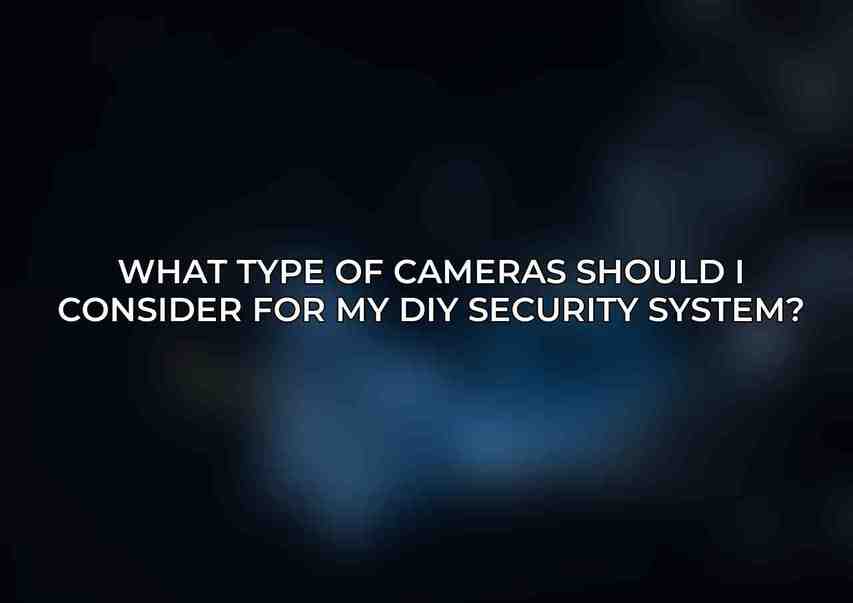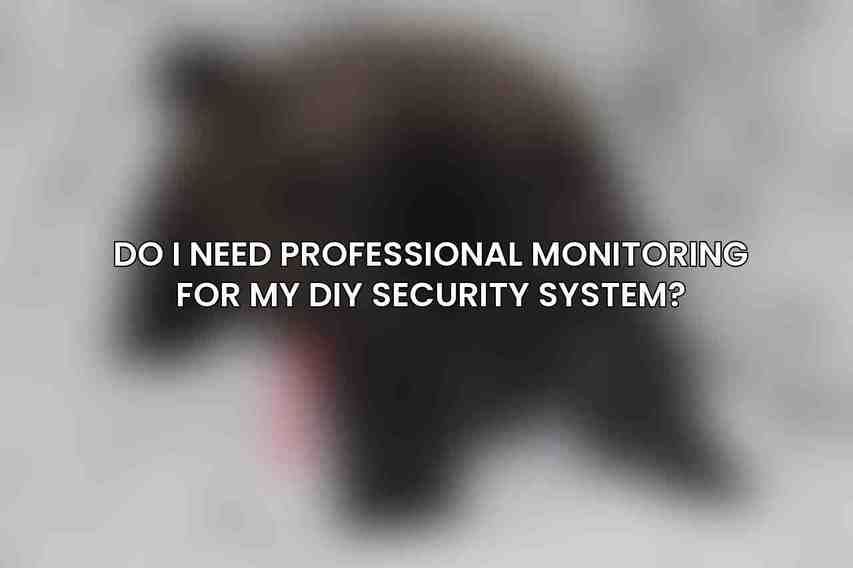Setting up a DIY security system requires a selection of essential components to ensure comprehensive coverage of your home or business. Here is a breakdown of key components that should be included in your system:
Motion Sensors:Motion sensors are vital in detecting any movement within a specified area and triggering an alarm. There are various types of motion sensors available, such as passive infrared (PIR), microwave, and ultrasonic. When choosing a motion sensor, consider factors like sensitivity, range, and features that reduce false alarms.
Door and Window Sensors:Door and window sensors play a crucial role in alerting you to unauthorized entry. These sensors trigger alarms when doors or windows are opened. They come in different types like contact sensors, magnetic sensors, and vibration sensors. Ensure to consider the type of door or window you are securing and the optimal installation location for the sensors.
Security Cameras:Security cameras provide visual surveillance of your property, allowing you to monitor activities remotely. Options include wired and wireless cameras suitable for indoor and outdoor use. Consider factors like resolution, field of view, and night vision capabilities when selecting a security camera for your system.
Central Control Panel:The central control panel serves as the hub that connects and manages all components of your security system. It monitors sensor triggers, controls sirens, and sends alerts in case of any security breach. When choosing a control panel, consider the number of zones it supports, the presence of a keypad for easy operation, and accessibility through mobile apps.
Siren:A siren is an essential component that emits loud audible alarms to deter intruders and alert occupants of a possible threat. Indoor, outdoor, and wireless sirens are available, each with different decibel levels and ranges. Select a siren that suits your property size and the level of deterrence you seek.
Optional Add-Ons
In addition to the essential components, there are optional add-ons that can enhance the functionality and security of your DIY system:
Glass Break Sensors:Glass break sensors can detect the sound of breaking glass, providing an additional layer of protection. These sensors come in acoustic and vibration variants, so consider the sensitivity levels and ideal placement for effective monitoring. See our take on Smart Home Integration: DIY Security Systems Guide
Smoke and Carbon Monoxide Detectors:Integrating smoke and carbon monoxide detectors into your security system can help prevent hazardous incidents. These detectors come in different types like photoelectric and electrochemical, with varying sensitivity levels and interconnectivity features for comprehensive coverage.
Smart Home Integration:For a more connected and convenient security setup, consider integrating your system with smart home devices. This integration allows for automated actions such as controlling lights, door locks, and receiving alerts through voice commands. Verify compatibility with other devices and ensure robust security protocols are in place.
Remote Access:Remote access capability enables you to monitor and control your security system from anywhere. Whether through a mobile app or web portal, remote access features provide convenience and peace of mind. Prioritize systems with strong security features and reliable remote functionality.
Additional Considerations
When planning your DIY security system, there are additional factors to consider to ensure optimal performance and reliability:
Power Source:Decide on the power source for your system, whether using batteries, AC power, or a combination of both. Consider factors like backup power options and recharge times to prevent system downtime.
Installation:Choose between DIY installation or professional installation services based on your comfort level and expertise. Evaluate the tools required and the ease of installation for a seamless setup process.
Monitoring Services:While optional, subscribing to monitoring services can provide 24/7 surveillance and response to security threats. Evaluate the cost, reliability, and response times of different monitoring services to determine if it aligns with your security needs.
Specific Product Recommendations
For those seeking specific product recommendations to kickstart their DIY security system, consider the following top picks:
- Motion Sensor:SimpliSafe Motion Sensor (PIR, 90° field of view)
- Door/Window Sensor:Wyze Door/Window Sensor (Magnetic, 120 dB siren)
- Security Camera:Arlo Pro 4 (4K resolution, 160° field of view, night vision)
- Central Control Panel:Honeywell Home Lyric Alarm System (6 zones, keypad, app control)
- Siren:ADT Pulse Outdoor Siren (105 dB, wireless)
By incorporating these essential components, optional add-ons, and considering additional factors, you can create a robust DIY security system tailored to your specific needs and preferences.
Frequently Asked Questions
What are the essential components of a DIY security system?
The essential components of a DIY security system include cameras, sensors, control panel, and an alarm system.
What type of cameras should I consider for my DIY security system?

For a DIY security system, consider wireless cameras that are easy to install and can be accessed remotely via a smartphone app.
Do I need professional monitoring for my DIY security system?

Professional monitoring is optional for a DIY security system. You can choose to monitor the system yourself or subscribe to a monitoring service.
How can I make my DIY security system more secure?
To make your DIY security system more secure, ensure that all devices are password protected and regularly update your system’s software.
Can I integrate smart home devices with my DIY security system?
Yes, you can integrate smart home devices such as smart locks, lights, and thermostats with your DIY security system to enhance its functionality.

